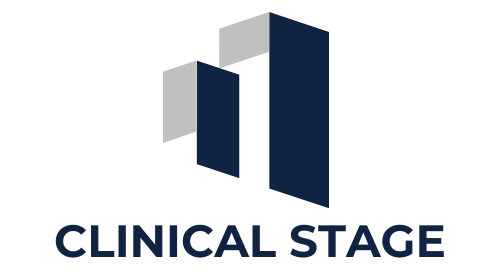Understanding Clinical Trial Phases
Clinical trials are a critical component of the drug development process, serving as the primary method for assessing the safety and efficacy of new medications and treatments. These trials involve human participants and are designed to evaluate how a new drug or treatment performs in comparison to existing treatments or placebos. Through a series of well-structured phases, clinical trials provide the necessary data to ensure that new drugs are both effective and safe for patient use.
Clinical trials are research studies that explore the effects of medical interventions on human health outcomes. These trials are meticulously planned and conducted in phases, each with specific objectives and methodologies. The primary purposes of clinical trials in drug development include:
- Assessing Safety: Ensuring that the new drug is safe for human use.
- Evaluating Efficacy: Determining whether the new drug is effective in treating the targeted condition.
- Establishing Dosage: Finding the appropriate dosage that maximizes efficacy while minimizing adverse effects.
- Monitoring Side Effects: Identifying and understanding potential side effects and adverse reactions.
Importance of Clinical Trials in Ensuring Drug Safety and Efficacy
Clinical trials are the gold standard for determining the safety and efficacy of new treatments. They provide a controlled environment in which researchers can systematically test and monitor the effects of a drug, ensuring that it meets regulatory standards before being approved for public use. This rigorous process helps protect patients from ineffective or harmful treatments and contributes to the advancement of medical science by validating new therapies and interventions.
Purpose of the Blog
The goal of this blog is to provide a comprehensive guide to the different phases of clinical trials, from Phase I to Phase IV. By breaking down each phase, we aim to offer insights into how these stages contribute to the overall drug development process. Understanding these phases is crucial for appreciating the complexity and rigor involved in bringing new medications to market. Additionally, this blog will highlight the significance of each phase, illustrating how they collectively ensure that new drugs are safe, effective, and beneficial for patients.
Preclinical Research
Before Human Trials
Before any new drug or treatment can be tested in humans, it must first undergo rigorous preclinical research. This stage is crucial for laying the groundwork for clinical trials and ensuring that the drug has the potential to be safe and effective in humans.
Explanation of Preclinical Research:
Preclinical research involves laboratory experiments and animal studies to evaluate the safety and biological activity of a new drug. This phase includes a variety of scientific tests that help researchers understand how the drug interacts with biological systems. The preclinical phase is designed to gather data on pharmacodynamics (the effects of the drug on the body), pharmacokinetics (how the body absorbs, distributes, metabolizes, and excretes the drug), and potential toxic effects.
Importance of Laboratory and Animal Studies:
Laboratory and animal studies are vital for several reasons:
- Safety Assessment: These studies help identify any potential toxicities and adverse effects that could occur in humans. By testing on animals, researchers can detect harmful effects before proceeding to human trials.
- Biological Activity: Researchers can observe how the drug behaves in a controlled environment, assessing its biological activity and mechanisms of action.
- Efficacy Evaluation: Early indications of the drug’s effectiveness in treating the targeted condition can be assessed during this phase.
- Dosage Determination: These studies help determine the appropriate starting dose for human trials, ensuring that it is both safe and potentially effective.
Goals: Assess Safety, Biological Activity, and Potential Efficacy
The primary goals of preclinical research are to:
- Assess Safety: Identify any toxic effects and determine a safe dosage range.
- Evaluate Biological Activity: Understand how the drug works within the body and its interaction with biological systems.
- Determine Potential Efficacy: Gather initial data on the drug’s effectiveness in treating the targeted condition.
- Inform Clinical Trial Design: Provide critical information that will help in designing the clinical trials, including dosage levels, potential side effects to monitor, and expected outcomes.
Preclinical research is a critical step that ensures only the most promising and safe drug candidates proceed to human trials, thereby protecting participants and maximizing the chances of clinical trial success.
Phase I Clinical Trials
Purpose and Goals
Assessing Safety and Dosage: The primary goal of Phase I clinical trials is to assess the safety of a new drug or treatment. Researchers focus on determining the most appropriate dosage that can be administered without causing significant adverse effects. This phase is crucial for identifying any potential safety concerns before progressing to later stages of clinical trials.
Determining Pharmacokinetics and Pharmacodynamics: Another key objective of Phase I trials is to understand the pharmacokinetics (PK) and pharmacodynamics (PD) of the drug. Pharmacokinetics involves studying how the drug is absorbed, distributed, metabolized, and excreted in the body. Pharmacodynamics focuses on the biological effects of the drug and its mechanism of action. Together, PK and PD studies provide comprehensive insights into how the drug behaves in the human body.
Study Design
Small Participant Groups: Phase I trials typically involve small groups of participants, usually ranging from 20 to 100 individuals. These participants can be either healthy volunteers or patients with the condition being targeted by the drug, depending on the nature of the drug and ethical considerations.
Dose-Escalation Studies: A common approach in Phase I trials is the dose-escalation study. In this design, participants are divided into cohorts, and each cohort receives a progressively higher dose of the drug. The objective is to identify the maximum tolerated dose (MTD) without causing severe adverse effects. This helps establish a safe dosage range for subsequent trial phases.
Significance
Identifying Safe Dosage Range: Phase I trials are critical for determining the safe dosage range of a new drug. By gradually increasing the dose and closely monitoring participants, researchers can identify the highest dose that can be administered safely. This information is vital for designing Phase II and Phase III trials, where efficacy becomes a primary focus.
Detecting Adverse Effects: Monitoring for adverse effects is a key component of Phase I trials. Researchers meticulously document any side effects experienced by participants to ensure the drug’s safety. This early identification of potential adverse effects helps in refining the drug’s safety profile and mitigating risks in later trial phases.
Phase I clinical trials are the foundation of the clinical development process, ensuring that new drugs are safe for human use. The data gathered in this phase provides essential information for designing more extensive and targeted studies in Phase II and Phase III, ultimately contributing to the successful development of new treatments.
Phase II Clinical Trials
Purpose and Goals
Evaluating Efficacy and Side Effects: The primary objective of Phase II clinical trials is to evaluate the efficacy of the drug in treating the specific condition it was designed for. Researchers assess how well the drug works in patients and gather more detailed information on its side effects. This phase helps determine whether the drug has a therapeutic effect and if its benefits outweigh its risks.
Determining Optimal Dosing Regimen: Phase II trials also aim to refine the dosing regimen established in Phase I. Researchers explore different dosages to find the most effective dose with the fewest side effects. This helps in optimizing the treatment plan for subsequent phases and eventual clinical use.
Study Design
Larger Participant Groups: Phase II trials involve larger groups of participants compared to Phase I, typically ranging from 100 to 300 patients who have the condition the drug is intended to treat. This larger sample size provides more reliable data on the drug’s efficacy and safety.
Randomized and Controlled Trials: Phase II trials often employ randomized and controlled study designs. Participants are randomly assigned to either the treatment group receiving the experimental drug or a control group receiving a placebo or standard treatment. This design helps ensure that the observed effects are due to the drug itself and not other variables.
Significance
Establishing Preliminary Efficacy: One of the key outcomes of Phase II trials is establishing the drug’s preliminary efficacy. By demonstrating that the drug works in a controlled setting, researchers can justify moving forward to larger and more definitive Phase III trials. Positive results in Phase II are crucial for gaining regulatory and financial support for further development.
Further Safety Assessment: While Phase I trials focus primarily on safety, Phase II trials continue to monitor for adverse effects in a larger and more diverse patient population. This helps build a more comprehensive safety profile for the drug, ensuring that it is safe for a broader range of patients.
Phase II clinical trials play a pivotal role in the drug development process by providing critical data on efficacy and safety. The findings from these trials inform the design and implementation of Phase III trials, bringing new treatments one step closer to clinical practice.
Phase III Clinical Trials
Purpose and Goals
Confirming Efficacy and Monitoring Side Effects: The primary objective of Phase III clinical trials is to confirm the efficacy of the drug established in Phase II and to further monitor its side effects in a larger patient population. This phase aims to provide a more definitive assessment of the drug's therapeutic benefits and risks.
Comparing with Standard or Placebo Treatments: Phase III trials often compare the new drug with standard treatments or a placebo. This comparison helps determine if the new drug offers a significant improvement over existing therapies or if it is effective when no standard treatment is available.
Study Design
Large Participant Groups: Phase III trials involve large groups of participants, typically ranging from 1,000 to 3,000 patients who have the condition the drug is intended to treat. The large sample size helps ensure that the trial results are statistically significant and can be generalized to a broader population.
Multicenter Trials with Diverse Populations: These trials are usually conducted at multiple centers across different geographic locations to include a diverse patient population. This diversity helps ensure that the drug is effective and safe for various demographic groups and can be widely used in clinical practice.
Significance
Providing Comprehensive Safety and Efficacy Data: Phase III trials provide comprehensive data on the drug's safety and efficacy, which is crucial for making informed decisions about its clinical use. The extensive data collected in this phase helps identify any rare or long-term side effects that may not have been evident in earlier phases.
Supporting Regulatory Approval (NDA/BLA Submission): The results from Phase III trials are essential for submitting a New Drug Application (NDA) or Biologics License Application (BLA) to regulatory agencies such as the FDA or EMA. Successful Phase III trials provide the evidence needed to demonstrate that the drug is safe and effective, supporting its approval for marketing and clinical use.
Phase III clinical trials are the final and most extensive testing phase before a drug can be approved for widespread use. The data generated in this phase are critical for regulatory approval and for ensuring that the drug provides real therapeutic benefits to patients.
Phase IV Clinical Trials
Purpose and Goals
Post-Marketing Surveillance: Phase IV clinical trials, also known as post-marketing surveillance studies, occur after a drug has been approved for public use. The primary goal is to monitor the drug's performance in the general population and to gather additional information on its safety and efficacy.
Long-Term Safety and Efficacy Monitoring: These trials aim to identify any long-term effects or rare adverse reactions that might not have been evident in the smaller, controlled environments of earlier phase trials. They also help determine the drug's long-term efficacy and impact on different populations over extended periods.
Study Design
Ongoing Monitoring of Patients Using the Drug: Phase IV studies involve the continuous monitoring of patients who are prescribed the drug in real-world settings. This can include tracking patient outcomes through electronic health records, patient surveys, and regular follow-up appointments.
Observational Studies and Registries: These trials often use observational study designs and patient registries to collect data. Observational studies involve monitoring patients without altering their treatment plans, while registries collect detailed information about patients' experiences and outcomes.
Significance
Identifying Rare or Long-Term Adverse Effects: Phase IV trials are crucial for identifying rare side effects or adverse reactions that may only become apparent when a drug is used by a larger, more diverse population over a longer period. This phase helps ensure that any potential risks are promptly identified and addressed.
Ensuring Continued Safety in the General Population: The ongoing surveillance provided by Phase IV trials helps ensure that the drug continues to be safe for the general population. Regulatory agencies may require these studies to maintain drug approval, and the findings can lead to updates in prescribing information, additional warnings, or even withdrawal of the drug if necessary.
Recap of Clinical Trial Phases
Understanding the different phases of clinical trials is essential for appreciating the rigorous process involved in bringing new drugs to market. Each phase plays a critical role in ensuring that a drug is safe, effective, and beneficial for patients.
Importance of Each Phase
- Preclinical Research: Lays the groundwork by assessing basic safety and biological activity.
- Phase I: Focuses on safety and dosage.
- Phase II: Evaluates efficacy and side effects.
- Phase III: Confirms efficacy, monitors side effects, and compares with standard treatments.
- Phase IV: Monitors long-term safety and efficacy in the general population.
The comprehensive and structured nature of clinical trials ensures that new therapies are thoroughly evaluated before becoming available to the public. This rigorous process is crucial for advancing medical science and improving patient care.
Encouragement for readers to support and stay informed about clinical research. Understanding and participating in clinical trials can contribute to the development of new, life-saving treatments.
Special Considerations and Emerging Trends
Adaptive Clinical Trials
Overview of Adaptive Trial Designs: Adaptive clinical trials are innovative designs that allow for modifications to the trial procedures based on interim data analysis. These adjustments can include changes in dosage, patient population, or even the addition or removal of treatment arms. The goal is to make the trial more flexible and efficient, potentially speeding up the drug development process while maintaining rigorous scientific standards.
Advantages and Examples of Adaptive Trials:
- Efficiency: Adaptive trials can reduce the time and resources required to evaluate a drug's efficacy and safety by allowing for early termination of ineffective treatments.
- Flexibility: These designs can accommodate changes in the trial protocol based on real-time data, improving the chances of identifying the most effective treatments.
- Examples: The I-SPY 2 trial for breast cancer and the RECOVERY trial for COVID-19 treatments are prominent examples of adaptive trials that have successfully implemented this approach.
Patient-Centric Trials
Importance of Patient Involvement and Feedback: Patient-centric trials prioritize the experiences and needs of participants. Involving patients in the design and conduct of clinical trials can lead to higher enrollment rates, improved compliance, and more relevant outcomes. This approach ensures that the research is aligned with the patients' perspectives and enhances the overall quality of the data collected.
Examples of Patient-Centric Approaches:
- Patient Advisory Boards: These boards consist of patients who provide input on trial design, consent forms, and communication strategies.
- ePRO (electronic Patient-Reported Outcomes): Using digital tools to collect data directly from patients about their symptoms, side effects, and quality of life.
- Decentralized Trials: Implementing virtual visits, home health care, and mobile health technologies to make participation more convenient for patients.
Real-World Evidence (RWE)
Incorporating RWE in Clinical Trial Phases: Real-World Evidence involves collecting data from real-world settings, such as electronic health records, insurance claims, patient registries, and wearable devices. RWE complements the controlled environments of clinical trials by providing insights into how treatments perform in routine clinical practice.
Benefits and Challenges of Using RWE:
- Benefits:
- Enhanced Understanding: RWE provides a broader understanding of a treatment's effectiveness across diverse populations and clinical settings.
- Cost-Effectiveness: Utilizing existing data sources can reduce the need for extensive and costly clinical trials.
- Regulatory Support: Agencies like the FDA are increasingly recognizing the value of RWE in supporting regulatory decisions.
- Challenges:
- Data Quality: Ensuring the accuracy and reliability of real-world data is essential but can be challenging.
- Standardization: The lack of standardization in data collection and reporting can hinder the integration of RWE into the clinical trial process.
- Privacy Concerns: Managing patient privacy and data security remains a critical issue when using real-world data.
Recap of Clinical Trial Phases
Understanding the various phases of clinical trials and their specific purposes is crucial for appreciating the comprehensive process involved in drug development.
Importance of Each Phase
Each phase, from preclinical research to Phase IV, plays a pivotal role in ensuring the safety, efficacy, and overall benefit of new treatments to patients.
The evolving landscape of clinical trials, with innovations like adaptive designs, patient-centric approaches, and the incorporation of real-world evidence, promises to enhance the efficiency and relevance of drug development.
Encouragement for continued support, participation, and awareness in clinical research. Staying informed about these advancements can lead to more effective and personalized healthcare solutions.
By embracing these emerging trends and special considerations, the future of clinical trials holds great promise for accelerating the development of safe and effective treatments, ultimately improving patient outcomes and advancing medical science.
Regulatory Oversight and Ethical Considerations
Regulatory Bodies and Guidelines
Role of FDA, EMA, and Other Regulatory Agencies: Regulatory agencies like the Food and Drug Administration (FDA) in the United States, the European Medicines Agency (EMA) in Europe, and other national regulatory bodies play a critical role in overseeing clinical trials. Their responsibilities include:
- Reviewing Trial Protocols: Ensuring that the proposed study design is scientifically sound and ethically acceptable.
- Monitoring Compliance: Regularly inspecting trial sites to ensure adherence to regulatory standards.
- Evaluating Results: Assessing the data from clinical trials to determine whether a new drug should be approved for market.
Key Guidelines and Regulations (e.g., GCP, ICH): Clinical trials must adhere to various guidelines and regulations to ensure safety, efficacy, and ethical conduct:
- Good Clinical Practice (GCP): An international ethical and scientific quality standard for designing, conducting, recording, and reporting trials involving human subjects.
- International Council for Harmonisation (ICH): Provides guidelines to harmonize the technical requirements for pharmaceuticals to ensure that safe, effective, and high-quality medicines are developed and registered efficiently.
Ethical Considerations
Ensuring Informed Consent: Informed consent is a fundamental ethical requirement in clinical trials. Participants must be fully informed about the nature of the study, its potential risks and benefits, and their rights as participants before agreeing to take part. This process involves:
- Clear Communication: Providing information in an understandable format, avoiding medical jargon.
- Voluntary Participation: Ensuring that participants know their involvement is voluntary and they can withdraw at any time without penalty.
- Continuous Process: Updating participants with new information as the trial progresses.
Protecting Participant Rights and Well-Being: Protecting the rights and well-being of participants is paramount. This involves:
- Confidentiality: Safeguarding participants' personal and medical information.
- Safety Monitoring: Regularly monitoring participants for adverse effects and ensuring prompt medical care if needed.
- Ethical Review Boards: Institutional Review Boards (IRBs) or Ethics Committees review trial protocols to ensure that ethical standards are maintained throughout the study.
Recap of Clinical Trial Phases
A comprehensive understanding of clinical trial phases, from preclinical research to Phase IV, underscores the meticulous process involved in drug development.
Importance of Each Phase
Each phase is integral in ensuring that new treatments are safe, effective, and beneficial for patients. Innovative trial designs, patient-centric approaches, and the incorporation of real-world evidence are shaping the future of clinical research, promising more efficient and relevant drug development processes.
Continued support, participation, and awareness in clinical research are essential. Staying informed about advancements can lead to more effective and personalized healthcare solutions, ultimately improving patient outcomes and advancing medical science.
By maintaining high ethical standards and rigorous regulatory oversight, the clinical trial process can ensure that new treatments are developed responsibly and effectively, benefiting both patients and the broader healthcare community.
- Preclinical Research: Involves laboratory and animal studies to assess the safety, biological activity, and potential efficacy of a drug before it is tested in humans.
- Phase I Clinical Trials: Focus on assessing the safety and dosage of a new drug in a small group of healthy volunteers or patients, identifying safe dosage ranges and potential side effects.
- Phase II Clinical Trials: Aim to evaluate the efficacy of the drug and further assess its safety in a larger group of patients with the condition. This phase helps determine the optimal dosing regimen.
- Phase III Clinical Trials: Conducted on larger patient groups to confirm the drug's efficacy, monitor side effects, and compare it with standard or placebo treatments. Successful Phase III trials provide comprehensive data for regulatory approval.
- Phase IV Clinical Trials: Post-marketing studies that monitor the long-term safety and efficacy of the drug in the general population, identifying rare or long-term adverse effects and ensuring continued safety.
Importance in Drug Development
Clinical trials are critical in the drug development process for several reasons:
Safety and Efficacy: Clinical trials provide the necessary data to ensure that new treatments are both safe and effective for patients.
Regulatory Approval: Rigorous testing and evidence from clinical trials are required for regulatory bodies to approve new drugs for market release.
Innovation and Improvement: Through clinical trials, researchers can discover new uses for existing drugs, optimize treatment regimens, and develop innovative therapies that improve patient outcomes.
Patient Confidence: The thorough testing process helps build trust in new treatments among healthcare providers and patients.
Encouragement for Ongoing Learning
The field of clinical research is constantly evolving, with new methodologies, technologies, and ethical considerations emerging regularly. Staying informed about these advancements is crucial for several reasons:
- Enhanced Knowledge: Understanding the complexities of clinical trials and drug development helps patients make informed decisions about their participation in research studies.
- Advocacy: Knowledgeable individuals can advocate for ethical practices, equitable access to new treatments, and continued investment in research.
- Professional Development: For healthcare professionals, staying current with clinical research trends can improve patient care and contribute to professional growth.
We encourage readers to explore further resources, engage with ongoing clinical research developments, and consider the significant role that clinical trials play in advancing medical science and improving patient care. The commitment to ethical and rigorous clinical research ultimately leads to safer, more effective treatments and a healthier future for all.










